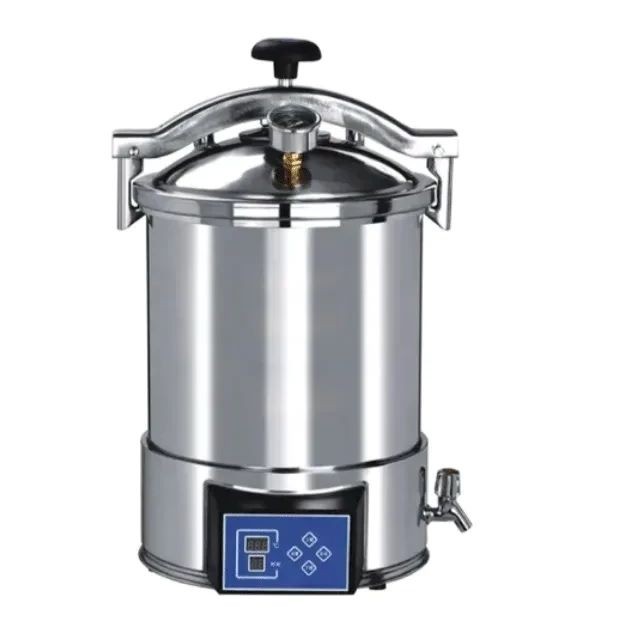
sterilization equipment
Portable Digital Display Automatic Laboratory Sterilizer Lab Autoclave for Sterilization Pressure
Item Number : KT-C05
Price varies based on specs and customizations
- Material
- Stainless Steel
- Working Temperature
- 134º C
Shipping:
Contact us to get shipping details Enjoy On-time Dispatch Guarantee.
Why Choose Us
Reliable PartnerEasy ordering process, quality products, and dedicated support for your business success.
Introduction
A Portable autoclave sterilization pressure, also known as an autoclave, is a compact device used to sterilize equipment using high-pressure saturated steam. It kills microorganisms by generating steam at high temperatures and pressures, ensuring thorough sterilization. Portable and easy to transport, it's commonly used in medical, dental, laboratory, and veterinary settings to prevent infections and maintain a sterile environment.
Detail & Parts
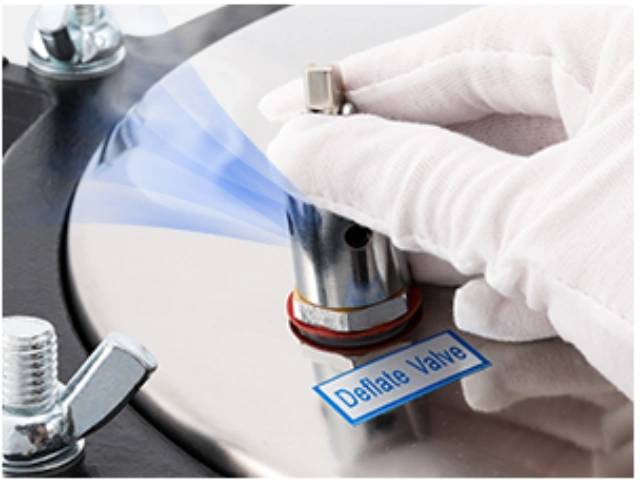
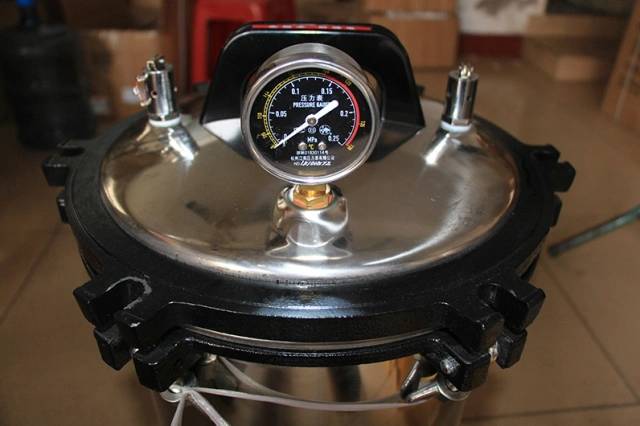
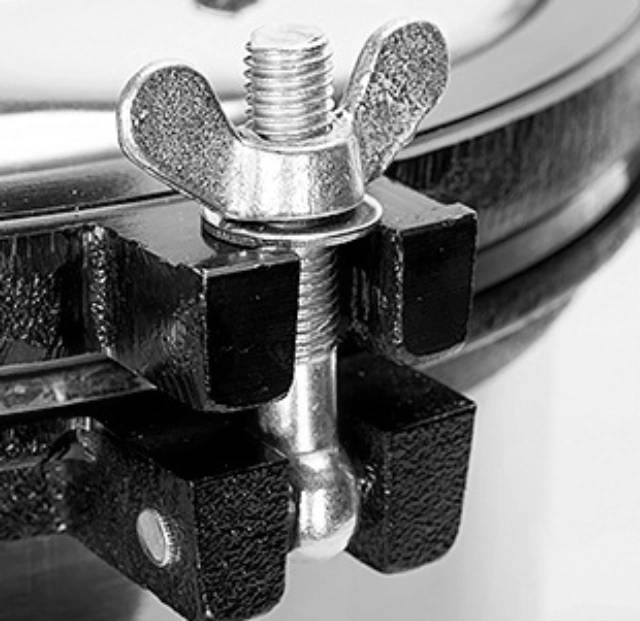
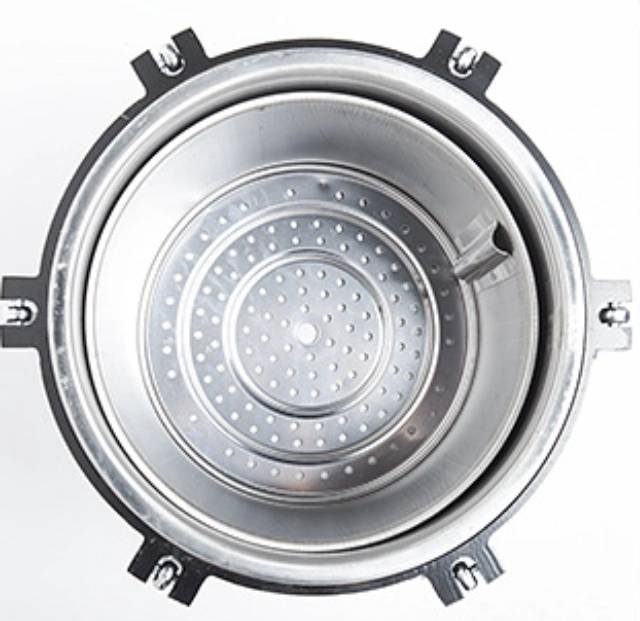

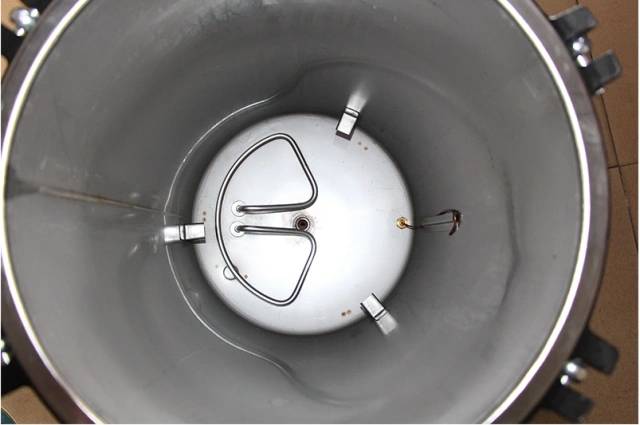
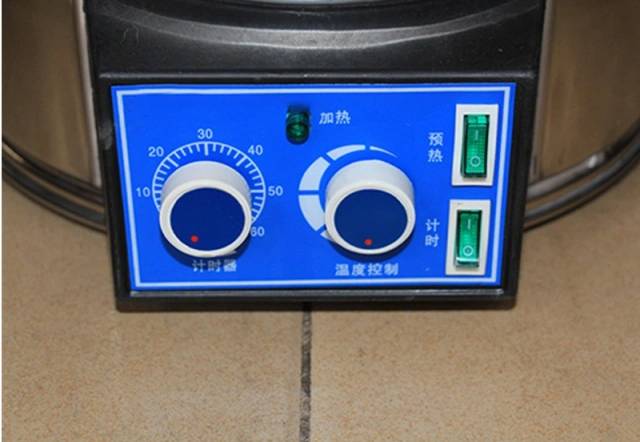

Performance and Features
- High quality all stainless steel material
- Quick open structure
- Digital display of working status
- Buzzer reminds automatic shutdown after sterilization
- Electric heating method
- Simple operation, safe and reliable
Technical Parameters
| Model | KT-18HDD | KT-24HDD |
| Disinfection volume | 18L φ280×260mm | 24L φ280×390mm |
| Fixed work stress | 0.14-0.16Mpa | |
| Rated working temperature | 126℃ | |
| Maximum safety pressure | 0.165Mpa | |
| Heat uniformity of sterilization room | ≤±1℃ | |
| Power | AC220V.50Hz/2KW | |
| Transport volume (mm) | 420×420×630 | 420×450×750 |
| Gross weight/net weight | 14/12Kg | 15/14Kg |
Applications
- hospitals
- health centers
- health centers
- factories and mines clinics
- scientific research
Disinfect and sterilize medical instruments, dressings, glassware, solutions, culture media, etc., and can also be used as cooking utensils and factories and mines in plateau areas to produce high-quality drinking water.
Designed for You
KinTek provide deep custom made service and equipment to worldwide customers, our specialized teamwork and rich experienced engineers are capable to undertake the custom tailoring hardware and software equipment requirements, and help our customer to build up the exclusive and personalized equipment and solution!
Would you please drop your ideas to us, our engineers are ready for you now!
FAQ
What Are The Advantages Of Using A Manual Press?
How Does A Manual Press Work?
What Types Of Tasks Can Be Performed Using A Manual Press?
What Are Some Common Applications Of Sterilization Autoclaves?
What Is An Autoclave Sterilizer?
How Long Does A Typical Sterilization Autoclave Cycle Take?
How Does An Autoclave Sterilizer Work?
Can Autoclave Sterilization Be Validated For Effectiveness?
What Are The Advantages Of Using Autoclave Sterilizers?
What Is Manually Operated Lab Press?
Can Autoclave Sterilization Damage Certain Materials?
What Safety Precautions Should Be Taken When Using Autoclave Sterilizers?
How Should Autoclave Sterilization Be Monitored And Documented?
Can All Materials And Items Be Sterilized Using Autoclave Sterilizers?
Are There Different Types Of Autoclave Sterilizers Available?
4.9
out of
5
Excellent efficiency; sterilizes lab instruments quickly. Worth every penny!
4.7
out of
5
Reliable sterilization, easy to use. A must-have for any lab.
4.8
out of
5
Speedy delivery, user-friendly interface. A valuable asset to our lab.
4.6
out of
5
Compact and efficient, saves space in our lab. Highly recommended!
4.9
out of
5
Exceptional quality, durable construction. Ensures sterility in our lab.
4.7
out of
5
Amazing value for money, exceeds expectations. A game-changer for our lab.
4.8
out of
5
Quick delivery, easy setup. Works like a charm in our lab.
4.6
out of
5
Compact size, fits perfectly in our lab. Meets all our sterilization needs.
4.9
out of
5
Exceptional quality, ensures sterility in our lab. Highly recommend!
4.7
out of
5
Amazing value for money, exceeds expectations. A game-changer for our lab.
4.8
out of
5
Speedy delivery, user-friendly interface. A valuable asset to our lab.
4.6
out of
5
Compact and efficient, saves space in our lab. Highly recommended!
4.9
out of
5
Exceptional quality, durable construction. Ensures sterility in our lab.
4.7
out of
5
Amazing value for money, exceeds expectations. A game-changer for our lab.
4.8
out of
5
Quick delivery, easy setup. Works like a charm in our lab.
4.6
out of
5
Compact size, fits perfectly in our lab. Meets all our sterilization needs.
4.9
out of
5
Exceptional quality, ensures sterility in our lab. Highly recommend!
4.7
out of
5
Amazing value for money, exceeds expectations. A game-changer for our lab.
4.8
out of
5
Speedy delivery, user-friendly interface. A valuable asset to our lab.
REQUEST A QUOTE
Our professional team will reply to you within one business day. Please feel free to contact us!
Related Products

Portable High Pressure Laboratory Autoclave Steam Sterilizer for Lab Use
Portable autoclave sterilization pressure is a device that uses pressure saturated steam to quickly and effectively sterilize items.

Liquid crystal display automatic vertical sterilizer is a safe, reliable and automatic control sterilization equipment, which is composed of heating system, microcomputer control system and overheating and overvoltage protection system.

Laboratory High Pressure Horizontal Autoclave Steam Sterilizer for Lab Use
The horizontal autoclave steam sterilizer adopts the gravity displacement method to remove the cold air in the inner chamber, so that the inner steam and cold air content is less, and the sterilization is more reliable.

Laboratory High Pressure Steam Sterilizer Vertical Autoclave for Lab Department
Vertical pressure steam sterilizer is a kind of sterilization equipment with automatic control, which is composed of heating system, microcomputer control system and overheating and overpressure protection system.

Desktop Fast High Pressure Laboratory Autoclave Sterilizer 16L 24L for Lab Use
The desktop fast steam sterilizer is a compact and reliable device used for rapid sterilization of medical, pharmaceutical, and research items.

Mini SS High Pressure Autoclave Reactor for Laboratory Use
Mini SS High Pressure Reactor - Ideal for medicine, chemical, and scientific research industries. Programmed heating temp and stirring speed, up to 22Mpa pressure.

Stainless High Pressure Autoclave Reactor Laboratory Pressure Reactor
Discover the versatility of Stainless High Pressure Reactor - a safe and reliable solution for direct and indirect heating. Built with stainless steel, it can withstand high temperatures and pressures. Learn more now.

Desktop Fast Laboratory Autoclave Sterilizer 35L 50L 90L for Lab Use
The desktop fast steam sterilizer is a compact and reliable device used for rapid sterilization of medical, pharmaceutical, and research items. It efficiently sterilizes surgical instruments, glassware, medicines, and resistant materials, making it suitable for various applications.

Laboratory Sterilizer Lab Autoclave Pulse Vacuum Lifting Sterilizer
The pulse vacuum lifting sterilizer is a state-of-the-art equipment for efficient and precise sterilization. It uses pulsating vacuum technology, customizable cycles, and a user-friendly design for easy operation and safety.

Desktop Fast Laboratory Autoclave Sterilizer 20L 24L for Lab Use
The desktop fast steam sterilizer is a compact and reliable device used for rapid sterilization of medical, pharmaceutical, and research items.

Laboratory Sterilizer Lab Autoclave Herbal Powder Sterilization Machine for Plant
The herbal powder sterilization autoclave machine for Chinese medicine uses saturated steam for effective sterilization. It utilizes the heat and penetrative properties of steam, achieves sterilization after heat preservation, and maintains a good drying effect with a dedicated drying system.

Laboratory Horizontal Autoclave Steam Sterilizer Lab Microcomputer Sterilizer
The horizontal autoclave steam sterilizer adopts the method of gravity displacement to remove the cold air in the inner chamber, so that the content of steam cold air in the inner chamber is less, and the sterilization is more reliable.

Laboratory Sterilizer Lab Autoclave Pulsating Vacuum Desktop Steam Sterilizer
The pulsating vacuum desktop steam sterilizer is a compact and reliable device used for rapid sterilization of medical, pharmaceutical, and research items.

High Pressure Laboratory Autoclave Reactor for Hydrothermal Synthesis
Discover the applications of Hydrothermal Synthesis Reactor - a small, corrosion-resistant reactor for chemical labs. Achieve rapid digestion of insoluble substances in a safe and reliable way. Learn more now.

Customizable High Pressure Reactors for Advanced Scientific and Industrial Applications
This laboratory-scale high-pressure reactor is a high-performance autoclave engineered for precision and safety in demanding research and development environments.
Related Articles

The Thermodynamics of a Perfect Seal: A Component-Level Approach to Sterilization
Learn why autoclaving your entire electrolytic cell destroys the seal. A guide to understanding material properties and protecting your experiments.

Comprehensive Overview of Warm Isostatic Press and Its Applications
Warm isostatic pressing (WIP) is a variant of cold isostatic pressing (CIP) that includes a heating element. It employs warm water or a similar medium to apply uniform pressure to powdered products from all directions. WIP is a cutting-edge technology that enables isostatic pressing at a temperature that does not exceed the boiling point of the liquid medium.

Affordable Rotavapor How to Save on Your Purchase
Rotavapor is a laboratory equipment that is used for distillation, purification, and concentration of liquid samples. It is a vital tool for chemists, biologists, and other researchers who work with various types of solvents and chemicals.

How to Get the Best Deal on a Rotavapor for Your Lab
A Rotavapor is an essential laboratory equipment that is widely used in various fields such as chemistry, biology, and pharmaceuticals.

10 Essential Safety Steps for Pressure Reactor Use in Laboratories
Safety is paramount when conducting chemical reactions under pressurized conditions. It is important to carefully prepare pressure reactors and laboratory safety equipment to prevent potential hazards that, if not controlled, can have catastrophic consequences. In order to ensure the safety of using a pressure reactor, it is important to understand the specifications of the reactor. Become familiar with the chemistry of the reactor material and make sure it is chemically resistant enough to withstand the substances used in the reaction.

Manual Pellet Press: A Comprehensive Guide to Efficient Lab Pelletizing
Explore the intricacies of manual pellet presses, including operation, safety, and maintenance tips. Learn how to choose the right press, understand force gauges, and optimize pellet quality for your lab experiments.

Laboratory Safety: Safe Use of High Voltage Equipment
Guidelines for the safe operation of high-pressure equipment in laboratories, including reactors, hydrothermal reactors, autoclaves, and gas cylinders.

Laboratory Safety: High Pressure Equipment and Reactors
This article discusses safety measures and precautions for using high pressure equipment and reactors in laboratories, including case studies and detailed usage instructions.

Basic Cleaning and Disinfection Equipment in the Laboratory
Overview of essential lab cleaning and disinfection tools and their operational principles.

PVD Sputtering Targets and Hot Isostatic Pressing: Part 2
This article discusses the manufacturing and optimization of PVD sputtering targets, focusing on techniques like hot isostatic pressing and high pressure heat treatment.

PVD Sputtering Targets and Hot Isostatic Pressing: Part 1
Explores the use of hot isostatic pressing in producing high-quality sputtering targets and the applications of PVD sputtering technology.

Hazards and Safety Precautions of Laboratory Pressure Vessels
An overview of the dangers and safety measures for pressure vessels in laboratory settings.